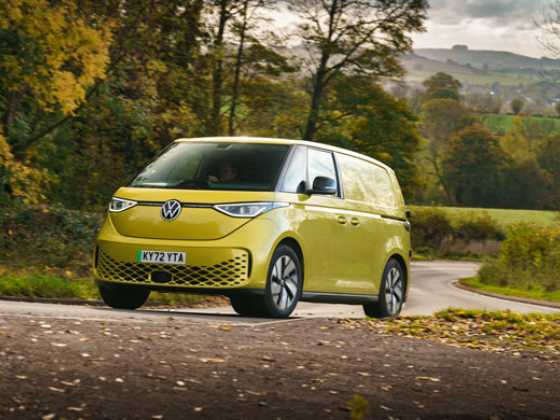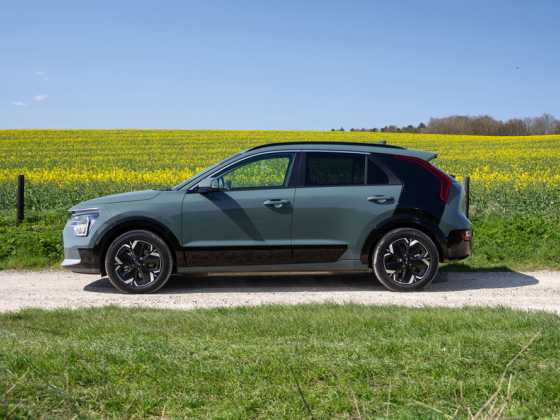Mamma Mia
The ultra-compact Mia U crosses the channel to be put through its paces by GreenFleet’s larger-than-life correspondent Roland Rendell
 When the buzzer to the entrance of the GreenFleet Towers went, the person at the other end announced he was here to deliver a van that its French manufacturer hopes will make a big noise – albeit it silently – in the UK fleet market. I didn’t know what to expect when we walked around to the car park. Recently, I’ve had the pleasure of experiencing a few of the latest LCVs on the market, including the new Citroen Berlingo, the Vauxhall Combo and the Fiat Fiorino. And I remember finding it difficult to control the urge to hum the tune to the words made famous by Agnetha, Bjorn, Benny and Anni-Frid, “Mamma Mia, here I go again…..”
When the buzzer to the entrance of the GreenFleet Towers went, the person at the other end announced he was here to deliver a van that its French manufacturer hopes will make a big noise – albeit it silently – in the UK fleet market. I didn’t know what to expect when we walked around to the car park. Recently, I’ve had the pleasure of experiencing a few of the latest LCVs on the market, including the new Citroen Berlingo, the Vauxhall Combo and the Fiat Fiorino. And I remember finding it difficult to control the urge to hum the tune to the words made famous by Agnetha, Bjorn, Benny and Anni-Frid, “Mamma Mia, here I go again…..”
We turned the corner, and there it was – the silver machine I have heard referred to as looking like a toaster on wheels. For me, the song continued….. “My, my, how can I resist you?” I knew this was going to be good fun.
Size Matters
The first notable point is the size, shape and apparent close proximity to the floor (just 110mm from the road). It looks like a cross between an old-style VW Camper and the Johnny Cab from Total Recall. Or the Mystery Machine from Scooby-Doo. I give it the once-over, and I have to say, the small, black, 3-spoke alloys are impressive looking, and add to the ‘urban’ styling Mia is aiming for.
The model I had was their commercial offering, the Mia U. Measuring just 3.19m long by 1.65m wide, they have certainly gone for something that can easily nip in and out of busy city centre traffic, make use of the narrower side streets, and operate around tight corners.
After I push the unlock icon on the key fob, the mechanism inside the door pops, sounding not unlike the noise of a rubber bung being pulled from a demijohn. However, that’s not it. There’s another task to perform before you reach out and actually open the door. Located under the wing mirror is a black square, with a white flower-shape, which happens to be the mia logo. Push that, and the door pops out towards you - only then are you able to slide it back, revealing the interior.
One seat? In the middle? Where’s the other one? No need, and this is genius. Remember this - the van is designed for small deliveries in towns and cities. Let’s not get this confused with the delivery vehicles used to drop off a washing machine or cooker. We’re talking deliveries of small to medium items, and the lighter the better. The vehicle has a kerb weight of 815kg, with a gross vehicle weight of 1180kg, meaning it has a payload capacity of 365kg. So, already you can see the market sectors Mia is going for.
I was hugely impressed at how easy it was to lower my not insignificant bulk in to the Mia U. Firstly, the sliding doors are a massive help. But the doors kind of wrap underneath the vehicle, and for part of the door width, some of the floor forms part of the door. Make sense? What I mean is that when you open the door, a gap in the floor appears too, meaning the “step in” is minimised.
A quick scan of the dash, and again, it’s very simple. No flashing lights, dozens of dials, switches and knobs. Not even a gear stick. Key in the ignition, foot on the brake, turn and wait for the beep. Nothing. Ah, a safety feature - close the door, and then it works fine. Through the steering wheel is a rectangle shaped screen, and on the right of it, an arrow pointing upwards (indicating forwards) is illuminated. I’m ready to go, and yet there’s silence. Handbrake off, push the button on the left of the dash that allows two commands (forwards and backwards), ease the throttle and it whirs in to life.
Indicators and wipers are standard left and right respectively. There’s a hazard light button next to the direction one, and an Eco button completes the trio. I am reliably informed that should I suffer a very real case of ‘Range Anxiety’, pushing this should get me home. I don’t intend on putting this to task, so asked no more. Air vents at either end of the dash complete the line-up of things you can push or turn. Electric windows? Nope. Either side of me are windows that you can slide half open. Wing mirrors for seeing what’s behind, and unusually, a rear view mirror which is offset to the right hand side. The reason being the rear door is not so much a door, but more a glass tailgate. Like it.
In terms of actual driving, it’s very nimble. The ride is a bit hard, but it’s a van, and it’s also not much more than the hand-span of a 10 year old off of the floor. I have a full charge, indicated on the left hand side of the rectangular screen, which says I have around 72 miles available to me.
Middle Ground
The high road and remainder of my journey home passes very smoothly and quietly. I must say, it’s very easy to drive indeed, and I really like the one seat in the middle driver position. It’s different, but somehow, strangely, it feels right. The one thing saw plenty of on the journey home was rubber-necking. As I explained earlier, this will certainly get noticed, and if you take that a step further, imagine it with your company’s livery on the side- it’s going to get seen.
So I spent the next few days doing similar 15 or 16 mile journeys, and really got to like the feel of the vehicle. In terms of performance, it has a range of 75-81 miles in Eco mode, 10kW of power when cruising, and 18kW at it’s peak. There is 58 Nm of torque and apparently can reach 66mph. I must confess, I didn’t venture on to the motorways, but did reach 52mph on a road where the black and white national speed limit signs were in abundance. Also, when you go to slow down, the regenerative braking helps conserve energy.
Charging time. Parked up outside the office, I then open the flap to access the vans in-built socket. It comes with a 5m long M3/T2 power cable which allows you to plug in to the mains. On it went, bang on 9:00am, and off I went to check my e-mails. However, I was curious. What kind of charge would I get after an hour? I went and checked, and it was 23 miles. Not bad at all. And I can honestly say the 12kW battery goes from empty to full in no more than five hours, which is great.
Market Place
At the outset, I wasn’t at all sure where this little van had a place in the market. After a week, I certainly did. First up, any one-man-and-his-tool-box maintenance guy that has to flit from place to place, fixing this and that on his rounds, would benefit. Even better for a company that needs to carry out essential maintenance at night, as it’s virtually silent. Depot to depot, university campus to university campus. All of these and plenty more are the sort of duties that this van was designed to tackle.
Does it stack up in terms of cost? Not really for me to say, as each company has its own needs, running costs and budgets. But for some, it’ll do just fine. At £16,995 + VAT on the road (after the UK Government Plug-In Grant), it comes with a five year manufacturer’s warranty, five year battery warranty and a five year road side assistance programme.
So, I shall wrap this up using more words from my Abba idols Benny and Bjorn – Voulez-vous….. un mia de votre flotte? I will answer in the words of Pele – I would.









